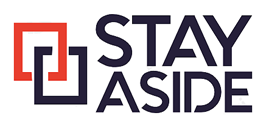Interested in learning more? We have partnered with Enkel to host a free webinar. Register now!
For many nonprofit organizations, managing expenses and cash flow feels like a constant game of catch-up. Revenue can be unpredictable, funding often arrives in waves, and expenses do not always line up with when money comes in. This can leave leaders stressed and unsure if they can meet upcoming payroll or cover next month’s programming costs.
The good news is that you do not need a finance degree to fix this. What you need is clarity.
At Enkel, we have worked with hundreds of Canadian nonprofits, and we have seen firsthand that financial stability begins with small but intentional improvements. When organizations take the time to understand their expense patterns and create processes that improve visibility and accountability, they can manage their operations with much more confidence.
Here are seven key areas where your nonprofit can improve its approach to expense and cash flow management.
1. Recognize and fix common expense challenges
Every nonprofit faces unique financial pressures, but the problems often fall into familiar patterns. Spending is disconnected from the budget. Staff do not know how their decisions impact the organization. And too often, financial reports arrive too late to make a difference. The first step is to recognize these issues early and commit to building a structure that supports better financial control.
One nonprofit we worked with had three different departments using separate systems to track expenses. As a result, leadership had no idea how much money was actually being spent until it was too late. By bringing these teams into a shared workflow with consistent reporting, they were able to save both time and money.
2. Create a clear and effective cash flow calendar
Budgeting is important, but it is not enough. A cash flow calendar shows not only what you expect to spend and receive, but when those transactions will occur. This is critical for forecasting tight spots and making informed decisions throughout the year.
Your calendar should include payroll cycles, grant disbursement dates, regular bills like rent and insurance, and one-time expenses like events or equipment. With just a few hours of setup, this tool can prevent last-minute scrambles and give your team a clearer picture of what is coming.
3. Identify small but costly spending issues
Nonprofits often leak money in small amounts that add up. This might include unused software subscriptions, multiple teams purchasing the same service separately, or missing opportunities for early payment discounts. These silent leaks are rarely intentional, but they can have a real impact on your available cash.
Conducting a quarterly review of your vendor list and recurring charges can help uncover these costs. One organization we supported found they were paying for two different CRMs after a department change. That single discovery saved them $4,800 a year.
4. Equip your team with better financial processes
Your program managers and team leads are often the ones spending money, but they may not have the tools or visibility to do it responsibly. Equip them with real-time reports that show budget versus actuals, and make it easy for them to request approvals and submit receipts.
Consistency matters here. Create simple workflows for reimbursements, approvals, and purchase decisions. Standardizing these processes helps prevent errors and creates a stronger culture of accountability.
5. Use automation to streamline tracking and approvals
Many nonprofits still rely on manual processes to track and approve expenses. This often results in delays, errors, and unnecessary stress. With today’s tools, that does not have to be the case.
Platforms like QuickBooks Online, Dext, and Plooto allow organizations to automate expense coding, streamline approvals, and integrate vendor payments. These tools are easy to set up and can save your team hours each month. In one case, an organization reduced its month-end close process from ten days to just four by automating bank reconciliation and invoice processing.
6. Create governance, accountability, and transparency
Strong cash flow management is not just about systems. It is about culture. Leadership must set the tone by prioritizing financial clarity and building a culture of transparency. This means regular financial reporting, clear roles and responsibilities, and an openness to refining internal controls as the organization grows.
Boards also play a critical role in oversight. By establishing regular checkpoints for reviewing cash flow and expense reports, you build shared accountability and ensure everyone is working toward the same financial goals.
7. Start small, but start now
Improving cash flow and expense management does not require a massive transformation. Start with one simple change, like introducing a shared expense policy or reviewing your vendor list. Build from there. Over time, small improvements compound and lead to stronger financial health.
At Enkel, we believe every nonprofit deserves the peace of mind that comes with financial clarity. With the right tools, processes, and mindset, your organization can stop reacting and start leading with confidence.
Join us for more
Want to go deeper into these strategies and see how other nonprofits are improving cash flow and expense management?
Join us on June 19 for our free webinar, Cash Flow Clarity: Real-World Expense Strategies for Canadian Nonprofits.
You will hear directly from Enkel CFO Shirley Wolff, walk through real examples, and leave with tools you can apply right away. Register now!
The views expressed in this article are the author’s alone and do not necessarily represent those of CharityVillage.com or any other individual or entity with whom the authors or website may be affiliated. CharityVillage.com is not liable for any content that may be considered offensive, inappropriate, defamatory, or inaccurate or in breach of third-party rights of privacy, copyright, or trademark.
